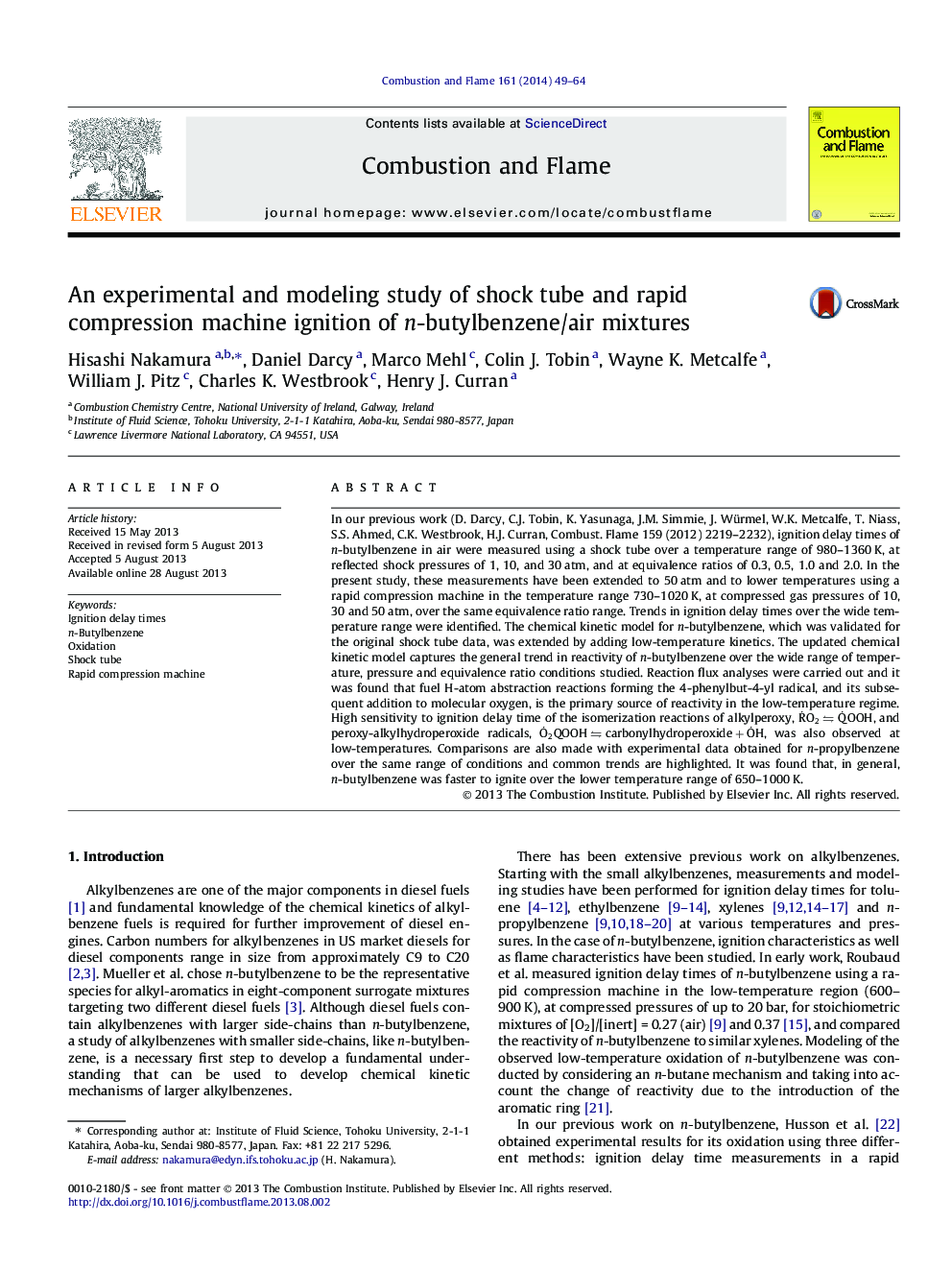| کد مقاله | کد نشریه | سال انتشار | مقاله انگلیسی | نسخه تمام متن |
|---|---|---|---|---|
| 168790 | 457954 | 2014 | 16 صفحه PDF | دانلود رایگان |

In our previous work (D. Darcy, C.J. Tobin, K. Yasunaga, J.M. Simmie, J. Würmel, W.K. Metcalfe, T. Niass, S.S. Ahmed, C.K. Westbrook, H.J. Curran, Combust. Flame 159 (2012) 2219–2232), ignition delay times of n-butylbenzene in air were measured using a shock tube over a temperature range of 980–1360 K, at reflected shock pressures of 1, 10, and 30 atm, and at equivalence ratios of 0.3, 0.5, 1.0 and 2.0. In the present study, these measurements have been extended to 50 atm and to lower temperatures using a rapid compression machine in the temperature range 730–1020 K, at compressed gas pressures of 10, 30 and 50 atm, over the same equivalence ratio range. Trends in ignition delay times over the wide temperature range were identified. The chemical kinetic model for n-butylbenzene, which was validated for the original shock tube data, was extended by adding low-temperature kinetics. The updated chemical kinetic model captures the general trend in reactivity of n -butylbenzene over the wide range of temperature, pressure and equivalence ratio conditions studied. Reaction flux analyses were carried out and it was found that fuel H-atom abstraction reactions forming the 4-phenylbut-4-yl radical, and its subsequent addition to molecular oxygen, is the primary source of reactivity in the low-temperature regime. High sensitivity to ignition delay time of the isomerization reactions of alkylperoxy, ṘO2⇋Q̇OOH, and peroxy-alkylhydroperoxide radicals, Ȯ2QOOH⇋carbonylhydroperoxide+ȮH, was also observed at low-temperatures. Comparisons are also made with experimental data obtained for n-propylbenzene over the same range of conditions and common trends are highlighted. It was found that, in general, n-butylbenzene was faster to ignite over the lower temperature range of 650–1000 K.
Journal: Combustion and Flame - Volume 161, Issue 1, January 2014, Pages 49–64